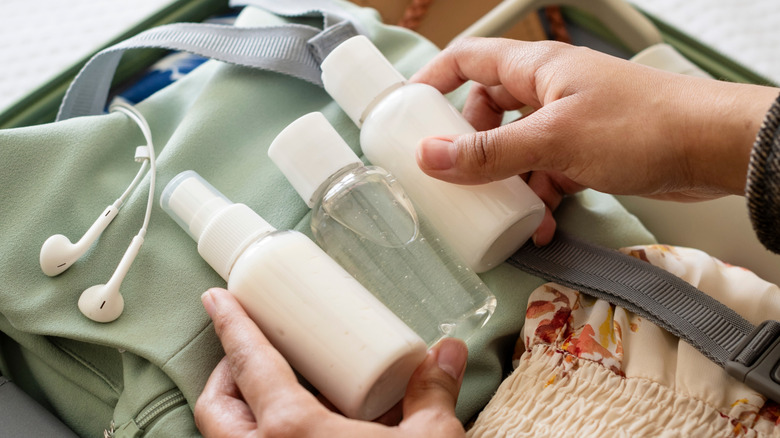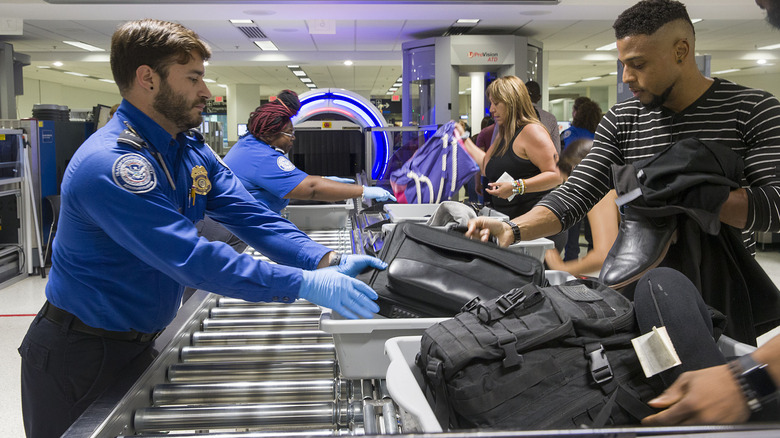TSA Teases Ditching Its Long-Standing 3-Ounce Liquid Rule
TSA rules are annoyingly inconsistent, but frequent travelers within the United States have had a few constants to contend with for a long time: taking off your shoes and not having liquids in your carry-on luggage. As of July of 2025, passengers have been allowed to keep their shoes on when going through airport security, and now it seems that the notorious 3-1-1 rule may be going away in the future, too. This regulation famously forbids passengers from bringing any liquids (or aerosols and gels) onto a plane that were individually larger than 3.4 ounces or were collectively too big to fit into a single quart-sized bag. While the regulation is still in place for the time being, Secretary of the Department of Homeland Security Kristi Noem hinted at a press conference that the 3-1-1 rule is being reexamined and won't be a part of TSA security screenings forever.
This isn't the first time that there have been rumblings of the end of this rule. In October of 2024, then-TSA administrator David Pekoske explicitly told The Points Guy that the rule would hopefully become less strict in the future. Unfortunately, while the TSA's 3-1-1 rule already has some exemptions and could theoretically loosen up even more soon, you shouldn't plan to throw out your reusable travel bottles and toss your full size shampoo and toothpaste into your carry-on just yet. This is because it will likely be 15 years or so before the TSA completely eliminates the unpopular 3-1-1 rule.
Why is the TSA planning to eliminate the 3-1-1 rule?
The 3-1-1 rule dates back to 2006, when a plan to smuggle liquid explosives transported in soda bottles onto airplanes was discovered. While the rule has stayed the same, the world has changed around those tiny travel bottles. There have been significant advances in security technology since that time, and airport scanners are a lot more powerful than they used to be. Thanks to superior X-Ray machines, known as CT scanners, TSA officers should be able to detect liquid explosives and tell them apart from ordinary drinks and toiletries that passengers might want to pack and bring with them onto their flights.
As this technology rolls out around the world and more and more countries allow airline passengers to bring regular-sized liquids onto commercial airplanes, it can be something that Americans and travelers flying out of the United States find extremely irritating about U.S. airports. This may be even more frustrating knowing that, at the time of writing, more than 250 major airports in the United States already have the CT scanners needed to check that larger liquids in carry-on bags are safe to bring on a plane. It seems more likely than ever that this change is on the horizon, but for now, you still won't get through the TSA's airport security screenings with a can of soda or a bottle of hand sanitizer if it's larger than 3.4 ounces.

